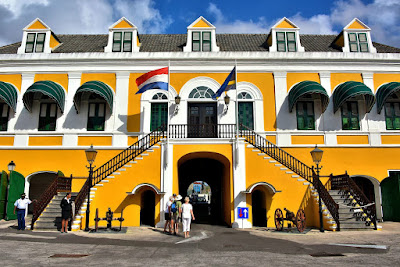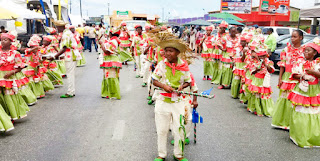History of Curaçao
"The island of giants," the first words used to describe the discovery of Curaçao and their original inhabitants, the Arawak, a group of indigenous people who migrated towards Curaçao, Aruba, and Bonaire from south America. In about 1499, the Arawak's would encounter Spanish explorers who would settle down on the island, govern over the ABC islands, and soon after, import the Arawak's as slaves to mine for copper in Hispaniola.
 |
| Fort Amsterdam in Curaçao |
After a century of Spanish rule, the Dutch would defeat the Spanish and govern over the island, due to their interest in salt mining. During that time, the Dutch West India company flourished, and Curaçao became a popular trading port, but with great success comes a price to pay. Seeing their trading ports thrive, it encouraged many other countries to try and invade or loot them. For this reason, they built Fort Amsterdam, one of the biggest forts built, and it prevented many invasions. It is still standing to this day, and the government resides here. In 2010 Curaçao was finally able to become an autonomous country. They officially separated from the kingdom of the Netherlands.
 |
| Bitterballens |
 |
| Keshi Yena |
Sources Consulted:
“Fort Amsterdam: Curacao Sightseeing: Curacao.” Fort Amsterdam | Curacao Sightseeing, www.inyourpocket.com/Curacao/Fort-Amsterdam_127589v.
“Curacao History Curacao History of Curacao.” History Curacao History Of, www.inyourpocket.com/Curacao/Curacao-History.
The Editors of Encyclopaedia Britannica. “Curaçao.” Encyclopædia Britannica, Encyclopædia Britannica, Inc., 10 Apr. 2019, www.britannica.com/place/Curacao.
Top 3 Islands I would like to adopt:
1. Curaçao
2. Costa Rica
3. Belize


Comments
Post a Comment